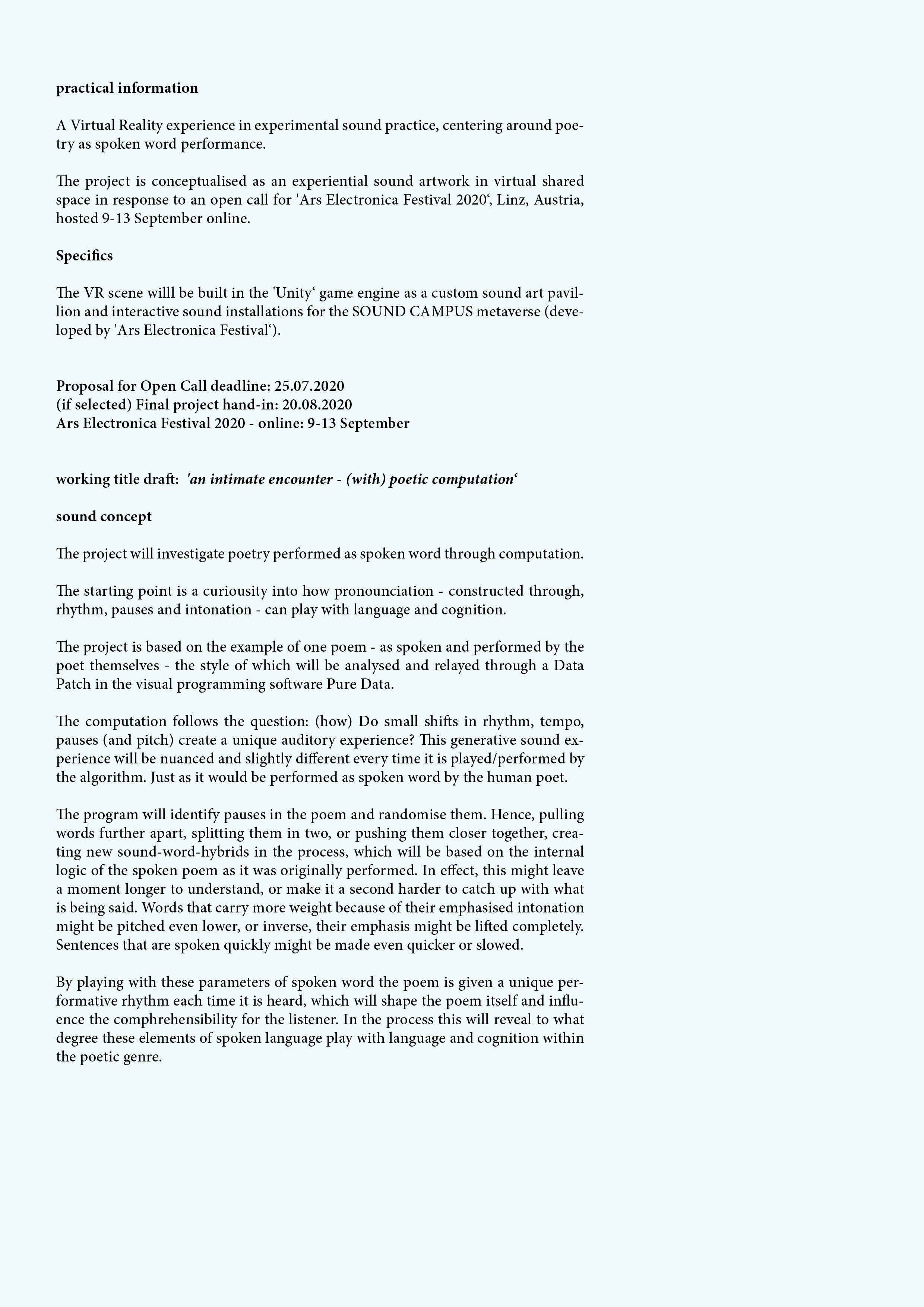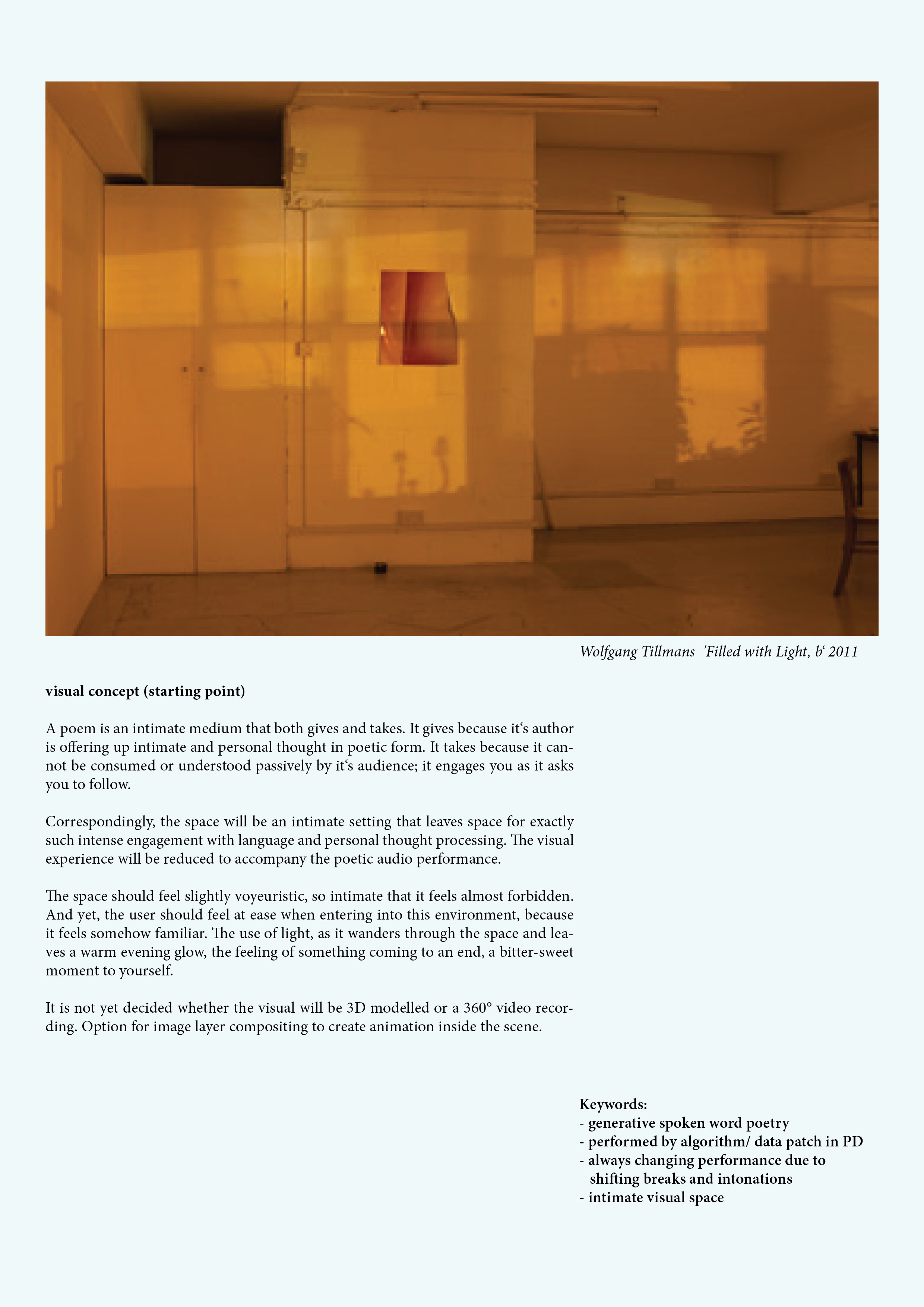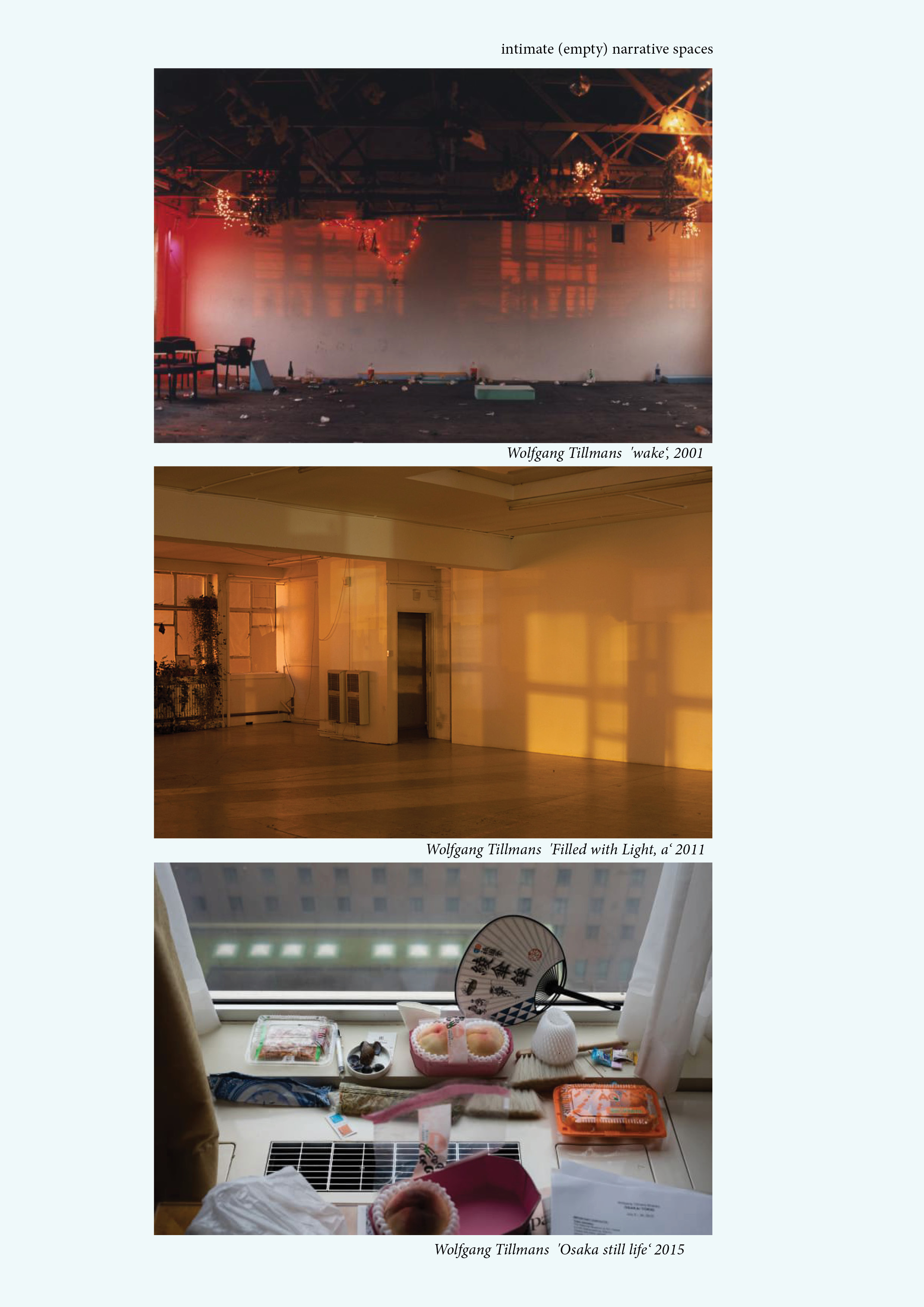The outset
In an effort of wanting to make the virtuell space more ‘real’ - more tangible somehow - I started out with the intention to bring ‘non-digital’ crafts into the VR space. Additionally I was introduced to the very basics of working with sound through data patches in Pure Data. This soon lead me to a poem titled ‘twist’ by Malina Heinemann. I was especially struck by her spoken word performance of the poetry, which subsequently lead me into considerations about sound, intonation, rhythm and understanding.
Collaborative Concept
The VR poem is developed in collaboration with the poet, Malina Heinemann, who lives and works in Berlin.
Sound concept
The poem as originally performed by Malina at ‘drift’ in Berlin:
The project will translate poetry into a virtuelle, visuelle experience and investigate spoken-word poetry through computation.
The starting point is a curiosity into how pronunciation - constructed through, rhythm, pauses and intonation - can play with language and cognition.
The project is based on the poem ‘twist’- as spoken/presented by the poet herself- the style of which will be analysed and relayed through a Data Patch in the visual programming software Pure Data.
The set-up of the patches follows the question: (how) Do small shifts in rhythm, tempo, pauses (and pitch) create a unique auditory experience? This generative sound experience is designed to be nuanced and slightly different every time it is played/performed by the algorithm. Just as it would be performed as spoken word by the human poet.
The data patch will identify pauses in the poem and randomise them. Hence, pulling words further apart, splitting them in two, or pushing them closer together, creating new sound-word-hybrids in the process, which will be based on the internal logic of the spoken poem as it was originally performed. In effect, this might leave a moment longer to understand, or make it a second harder to catch up with what is being said. Words that carry more weight because of their emphasised intonation might be pitched even lower, or inverse, their emphasis might be lifted completely. Sentences that are spoken quickly might be made even quicker or slowed.
By playing with these parameters of spoken word the poem is given a unique performative rhythm each time it is heard, which will (re-)shape the poem itself and influence the comprehensibility for the listener. In the process this will reveal to what degree these elements of spoken language play with language and cognition within the poetic genre.
This theme of ‘sound research’ i.e. questioning how we hear speech is inspired by Diana Deutsch’s research into ‘Musical Illusions and Phantom words’
Visual concept
The VR experience will be a slow, fully guided, visual journey of the poem ‘twist’ and position it across and within the space, hereby creating a dynamic, shifting, spatial (sound) experience.
- pdf of poem
The main visual components (bodies, street elements) are inspired directly by the poem.
dry asphalt
my mind
on this street
the street
pavement
kerbside
through the kerbstone'
tongue
behind your ear
my mouth
inside my head
my brain
your teeth are splitting
your lips are bleeding
my fingers / your fingers
my hand
my eyes / your eyes
my inner surface the edges transformed
tongue-mouth-narrowness
finger-hand-fragmentation
mind-street-realisation
Key-adjectives or visual phrases are selected to help further define the VR space and effects.
it’s twisted
are twitching
are splitting
are transparent
opacity
restless
my sight
was body-less
alienation
transcendence
are distorting
are blurring
be sharp
twisted knot
We spoke about the body, about foldings and the simulacra of internal to external realities.
The external symbols of the street, the kerbside, the kerbstone, the dry asphalt all serve as analogies, wherein the outside terminologies are used to illustrate an inner reality.
A conversation between two people? or an internal monologue? A network of selves? A blurring, twisting, twitching back and forth between these selves.
Visual concept outline:
Process: Integration of Pure Data
Patch (1) ‘ identify pauses’ and randomise them > loads audiofile > define breaks duration > identifies breaks by > randomises and extends the breaks
Patch (2) identify intonation through pitch and change the pitch
Patch (3) randomise tempo > specify sentences/sections where tempo can be altered
Process
This semester I mainly started work on creating my own visual elements, using photogrammetry as technique to transport places, textures and people from the real into the rendered mesh.
I used a range of different photogrammetry softwares: For mobile, quick and relatively small/compact models I used the Trnio app, which uses approx. 80 pictures, which was sufficient for static captures: the street renderings.
During the shoot with (living, breathing, moving) people I used 3 different Softwares to compare and have a choice of results:
When using Trnio to scan people the results vary from recognisable to quite distorted. It is generally more unpredictable but the models are calculated on an external server, which gives very quick and ‘low effort’ results.
Metashape is a great photogrammetry software that creates very detailed point clouds and a realistic texture on the model. However, once creating a dense mesh the solid form (sans texture) has many irregularities and a very ‘bumpy’ surface, most probably resulting from the micro-movements of the models. This results in requiring a lot of cleaning up of the models afterwards.
My personal preference is Agisofts Recap Photo (which sadly only runs on Windows). The software also sends the images to an external server were the models are created quickly. The way the software deals with ‘irregularities’ or missing information results in very organic colour transitions and fluid, soft shapes. Also the way the texture is displayed in the 3D viewport is ideal.
Regrettably, this same quality gets lost when the models are transitioned into a 3D program like Cinema4D or Blender.
I currently like the Two-sided Unity shader asset from Ciconia Studio, which both allows for the external and internal view of the models in Unity and also creates semi-realistic looking textures.
This is one of my main objectives inside VR - to create tangible, almost touchable textures and move further away from the ‘game’ look.
- For the future - when dealing with scanning people - my additional research indicated that a depth sensor that works with rays instead of a batch of photographs is preferable. I’ve additionally learned that when working with people a batch of 100 images shot in rapid succession is better than up to 300 images with detailed shots because the software will obtain to many slight shifts which promote irregularities, in this case it seems: less is more.
The models are cleaned up and sculpted in Cinema4D. I considered working with Meshmixer to combine and ‘mesh’ different models together into a type of hybrid body-street sculpture but currently the main assembly is done directly inside Unity to allow for more flexibility and options to immediately test camera angels.


